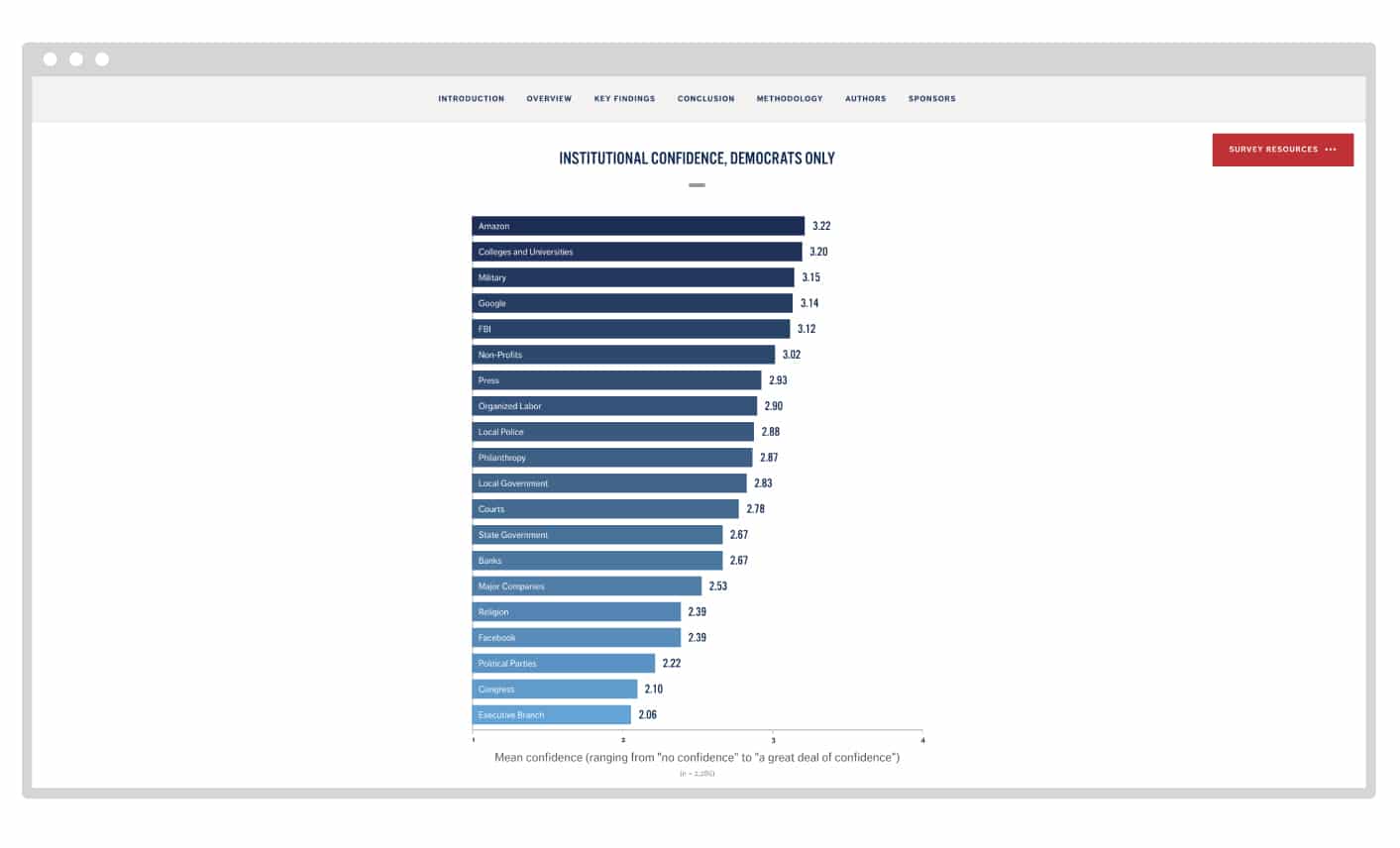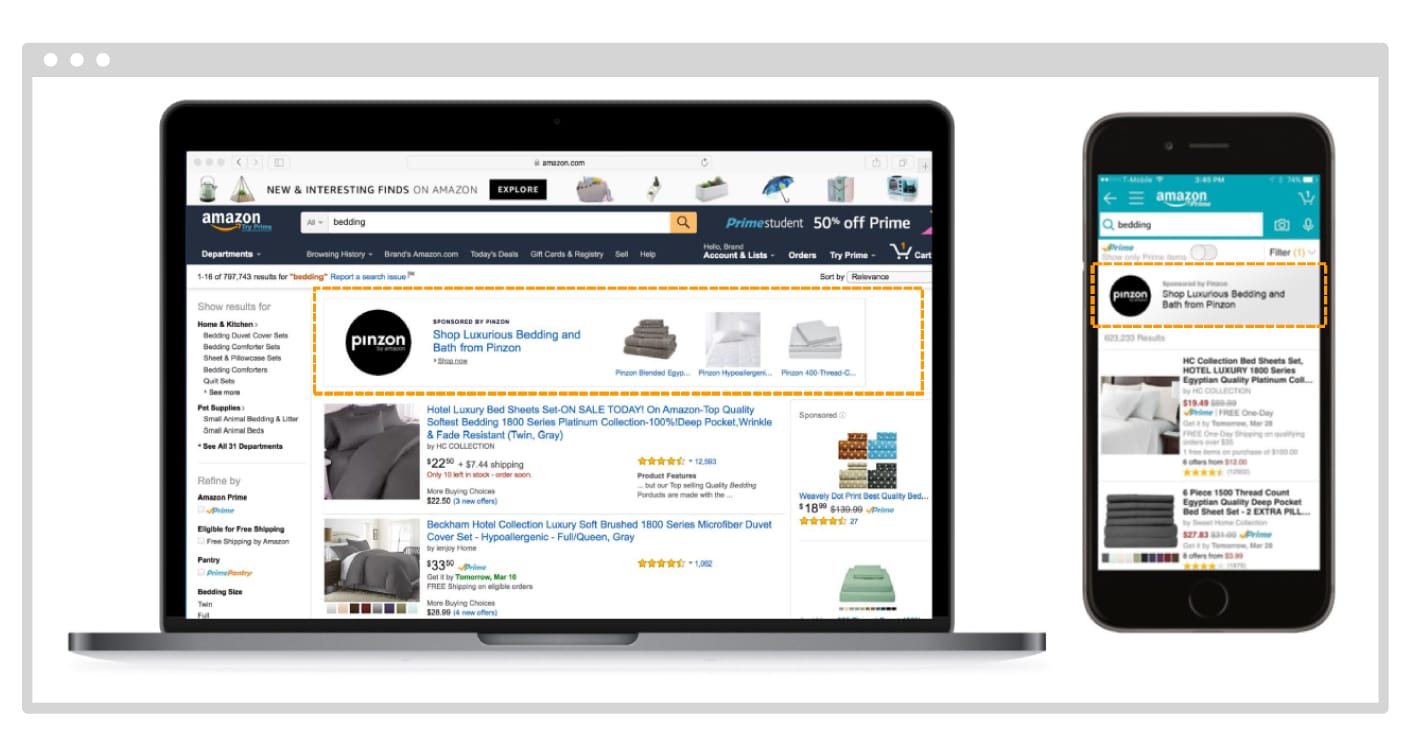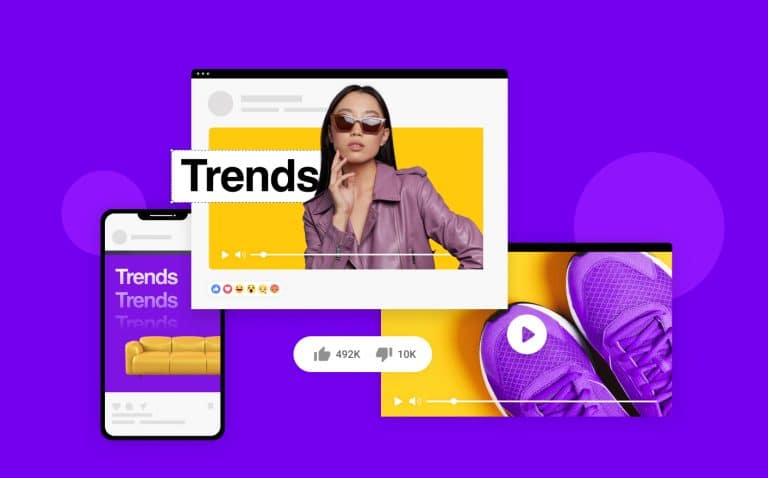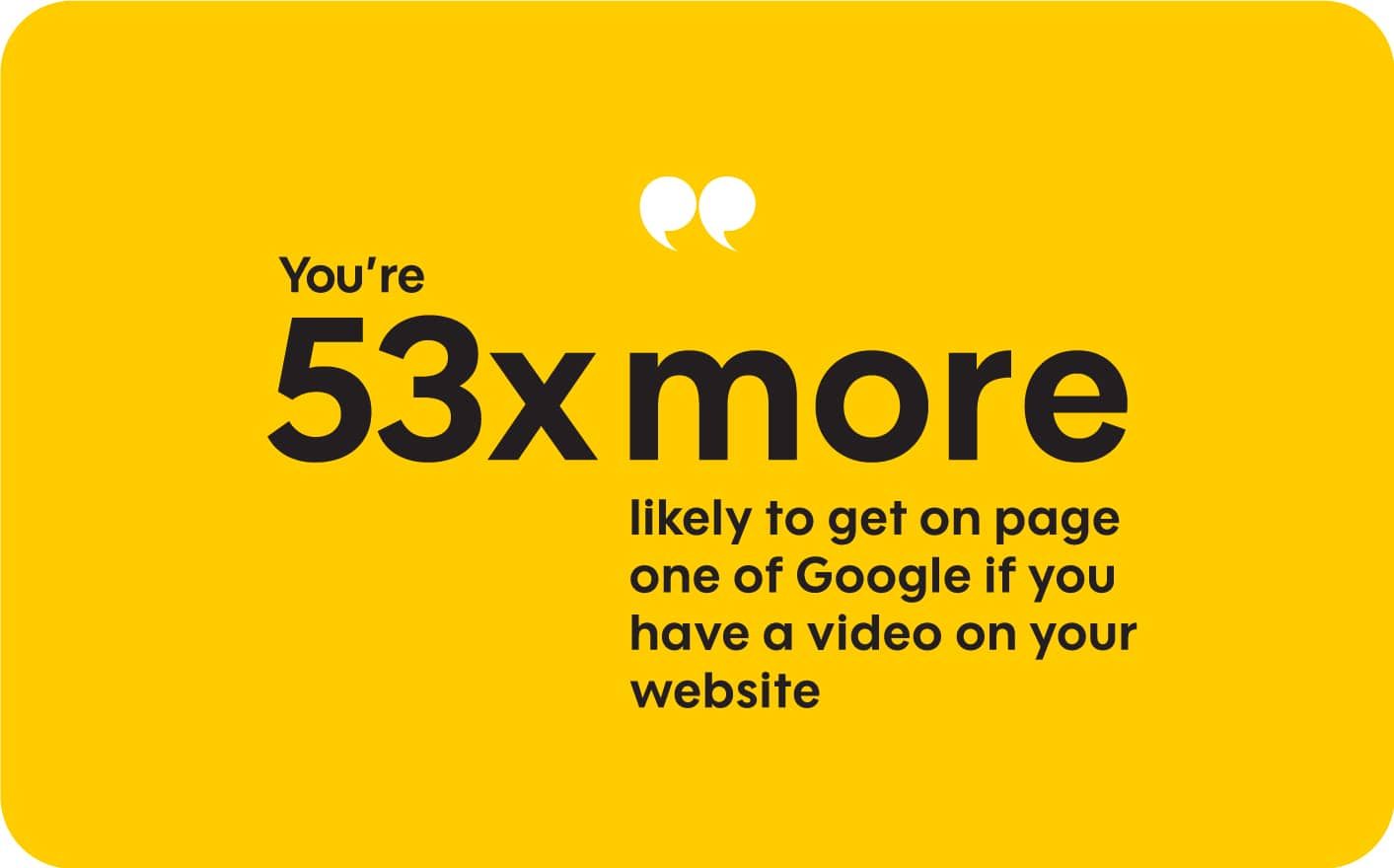
How Much Does It Cost to Advertise on Amazon?
When most people think of Amazon, they usually think of Amazon Prime, free 2-day shipping and the joy of buying just about anything from the comfort of their home.
However, cleverly tucked behind this well-known brand is the Amazon advertising platform that gives other eCommerce businesses the opportunity to get their products in front of an audience that already has their credit card out and ready to make a purchase.
It’s true that there are platforms like Facebook, Instagram, Google Ads and others that you could volley your campaign budgets too. But advertising on Amazon has some unique advantages that may be exactly what your brand needs to hit its growth goals.
But, as with every PPC channel, there is always one looming question. In this case, that question is, “how much does it cost to advertise on Amazon?” That’s the question we’re going to be answering for you today. But first, let’s talk about why Amazon ads are worth your time and money.
Why it’s worth investing in Amazon Ads
Every great relationship is built on trust.
That saying is just as true in a business setting as it is in a personal one. Consumers feel that trust is just as important, if not more important than the price of an item.
Imbuing a high level of trust into your brand can take time. But when you advertise on Amazon, you can piggyback on the trustworthiness they already built with their customers.
That’s no little thing. In fact, Americans have more confidence in Amazon then they do their government or the press (unfortunate but true).
So when you’re advertising here, your brand is also viewed with a high level of credibility that makes it easier to convert ads into sales.
People don’t like ads because they’re usually a noisy, in-your-face approach to getting attention. However, Amazon ads are very different.
CPC Strategy found that 90% of Amazon shoppers hardly ever notice ads on Amazon.
That’s not because they’re hidden or ineffective, but because the ads on Amazon feel like natural product placements. To shoppers, they feel like just another useful service that helps them find the products that best fit their needs.
They blend in, and yet they still drive sales. In fact, according to AdBadger, their users drive an average of 26 conversions per day using Amazon ads.
So even though people don’t notice them, they’re still clicking on ads and purchasing items. That is a win-win no matter how you look at it.
How much does it cost to advertise on Amazon?
Now that we’ve covered the merits of advertising on Amazon, let’s get back to our central question–the cost.
The unfortunate truth is that there’s really no way to give an exact price for how much advertising on Amazon will cost. As a true pay-per-click advertising platform, you are charged only for the clicks your ads receive and able to set your own advertising budget.
So, while the cost to advertise on Amazon is really determined by your budget, there is available data that will help you gauge how much you should budget for advertising on the platform.
How much does it cost to set up an Amazon account?
First of all, you’ll probably need to invest at least $40 to get started since that’s the cost for the professional seller account on Amazon. Before you can start advertising on Amazon, you must have an Amazon Sellers account.
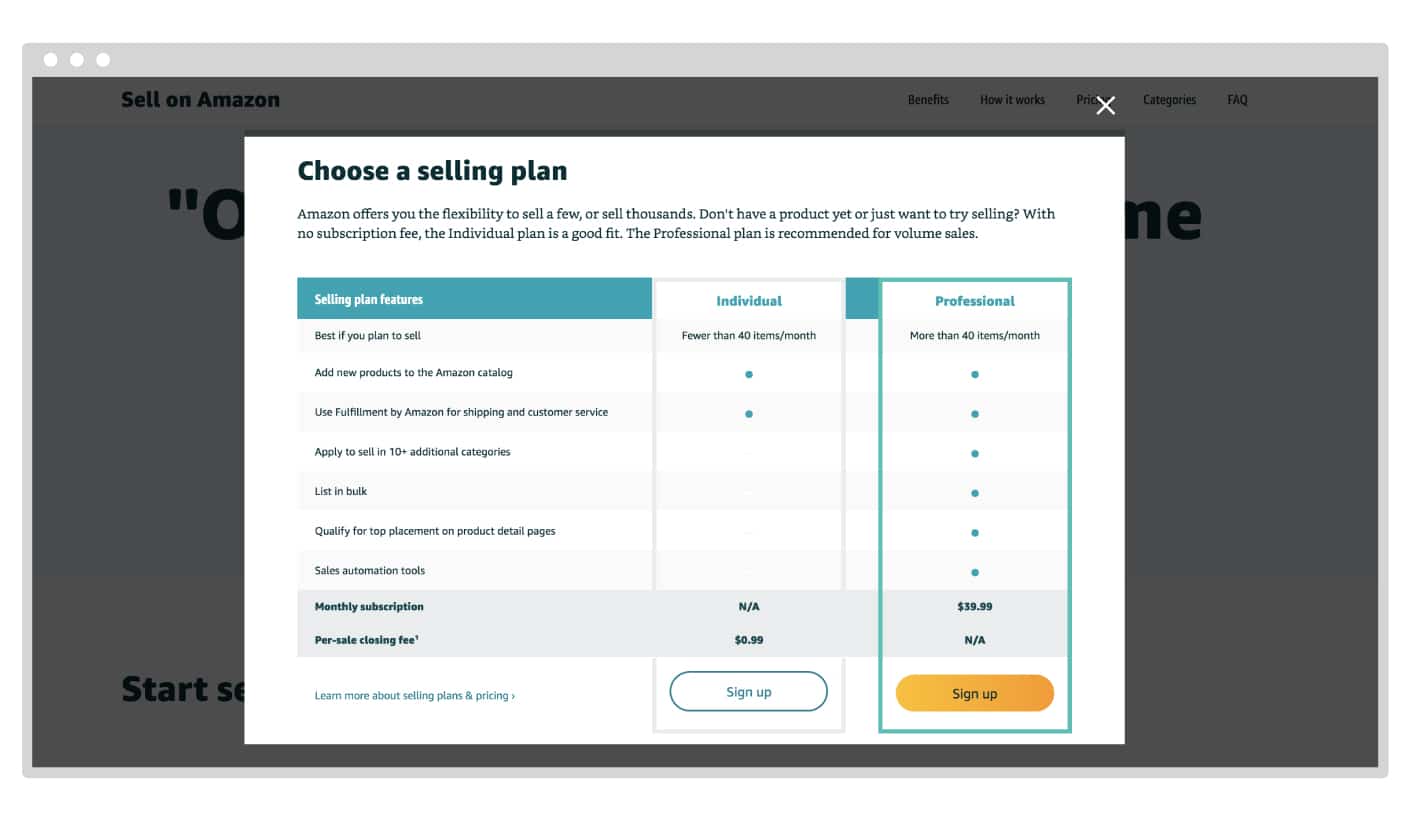 There are two options for the Amazon Sellers accounts:
There are two options for the Amazon Sellers accounts:
- Individual. Best if you have 40 items or less to sell each month. Costs $0.99 per-sale closing fee. No monthly subscription needed.
- Professional. Best if you plan to sell more than 40 items a month. Has no pre-sale closing fees, but requires a monthly membership of $39.99.
Individual seller accounts are usually best suited for–as the name implies–individuals looking to sell a few items, but not necessarily running a business. (Think college students selling their used textbooks.)
Chances are you fit into the Professional tier, so you’ll need to invest the $39.99 per month before you can even start advertising. Once you’ve created an Amazon Sellers account, you can start setting up ads and you can run as many Amazon ads as you can afford under that one account.
How much does Amazon charge per click?
For Sponsored Ads set up through the Amazon Marketing Service (AMS) self-service platform, Amazon charges you per click that your ads receive.
According to tests done by Practical Ecommerce, the cost-per-click (CPC) price for running Sponsored Ads is usually $0.35 or less. And since you’re in control of your budget, you can determine how much you’re willing to pay before your campaign stops running (budget cap).
If you have an ad budget of $100 for a certain ad, then you’ll pay per click up to that $100 amount plus your monthly Amazon Seller account fee.
So, you can expect to spend about 35 cents to generate one click. That’s a good benchmark to keep in mind. But, how much do you need to spend in order to actually drive sales for your products?
That’s what we’re going to dig into it next.
How much are brands spending on Amazon advertising?
As Amazon takes up more space in the advertising world, companies are boosting their Amazon advertising budgets. Third Door Media surveyed nearly 700 marketers and found that 80% plan to increase their Amazon advertising budget in 2019 while 20% of that group plans to boost it by 50% or more.
How much should you spend on Amazon advertising?
When it comes to setting a budget for advertising on Amazon, there are a few ways to go about it.
If you’ve got some flexibility in your budget, you can set your average daily budget for ad campaigns based on how they perform over time.
When you’re just getting started, you likely won’t have clarity on what your daily average spend should be. At this point, it makes sense to assign a few dollars per ASIN (Amazon Standard Identification Number) to begin generating traffic for your ad campaign. This also helps to avoid unanticipated costs.
Once you’ve got some performance data, you can make a more informed decision and adjust your budget as needed. If your campaign is profitable, don’t cap your budget at the account level. In other words, allow for maximum profitability on specific campaigns by adjusting your budget so you’re not limiting your spend prematurely.
If you do so, your ads can stop running when sales are occurring and this could render a loss of potential sales. If your campaign is profitable, set your budget just above your daily average budget spend (e.g. 10-20% above) to protect against unexpected costs.
If you find that your campaign is unprofitable, it’s basically the same logic applied in the other direction. Set a budget at the top level to put a maximum on the amount you are willing to spend until the campaign starts to render results.
That said, rather than relying on your budget as the mechanism to make an unprofitable campaign profitable, focus on optimizing the campaign through better keyword bid optimization, PPC campaign structuring, negative keywords, and using available keyword match types.
Sponsored Ads Vs. Organic product listings
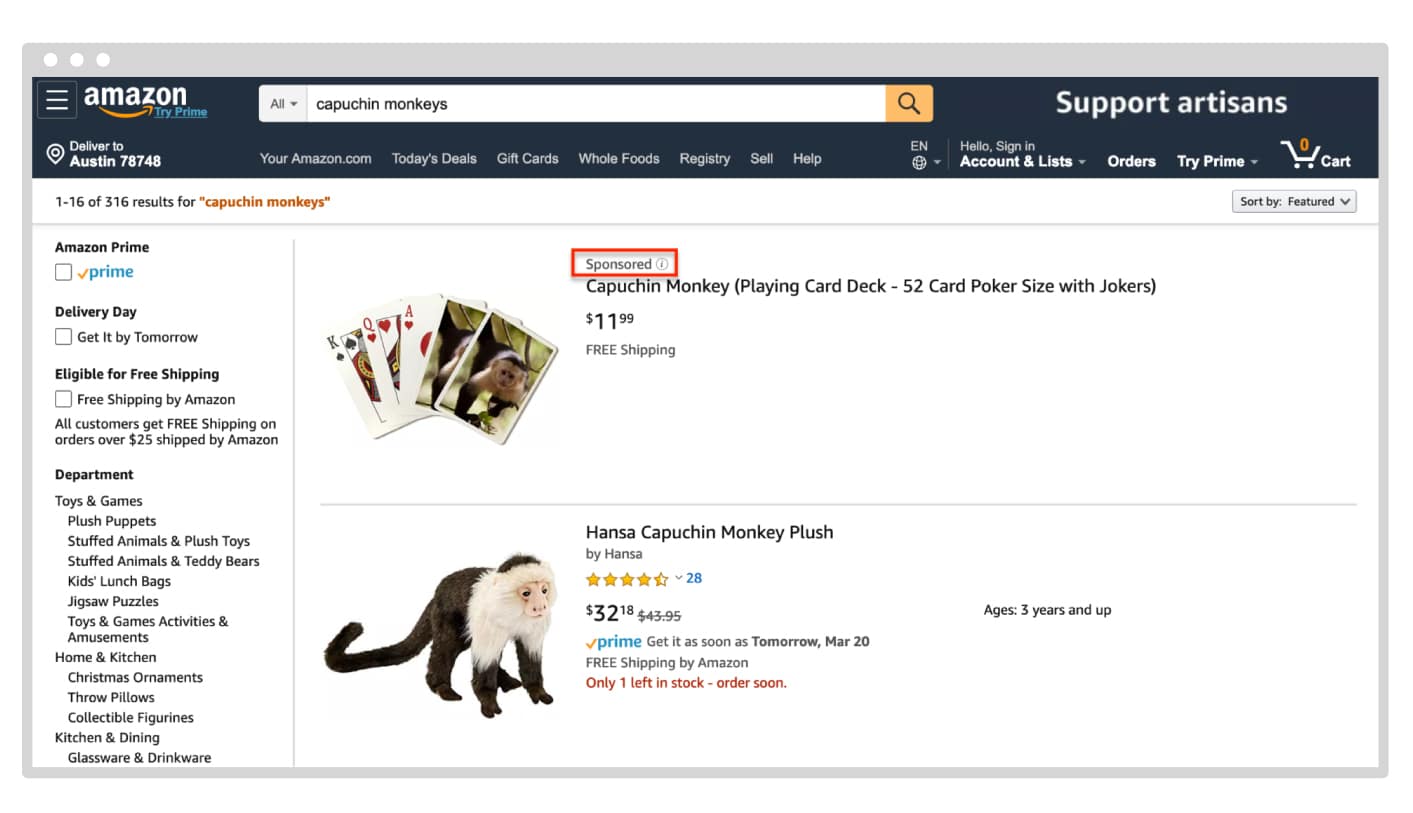 Whenever a customer runs a search on Amazon, they’ll get a SERP (Search Engine Results Page) with two different types of listings:
Whenever a customer runs a search on Amazon, they’ll get a SERP (Search Engine Results Page) with two different types of listings:
Organic Listings
The organic listings appear on the Amazon SERP through Amazon’s A9 algorithm, which determines the products most relevant to the customer’s search query.
Sponsored Products
The sponsored ads are listings for products that are relevant to the search query but are effectively ads which appear above the organic listings. This is important to note: they appear above the search results because sellers pay to give those products a bit of a lift by placing them as ads. These sellers are only asked to pay if their ads get clicked, hence the term “pay-per-click” or PPC.
It’s worth mentioning here that Sponsored Brands are keyword-targeted ads that show up in notable locations within search results along with a brand logo, collection of products, and custom headline. Customers are taken to an Amazon Store, custom landing page, or product listing page when they click on the ad—all within the Amazon platform.
Organic vs. paid
Don’t think of it as organic or paid. The two should work together to boost your overall traffic and increase conversions. In fact, they must work together if you’re going to successfully leverage both at the same time. They will mutually reinforce each other when used effectively.
It can be easy to think of organic traffic as free, but it really isn’t.In order for an organic listing to rank on the first page (where you need them), you’ll need to pour a lot of time, effort, and sometimes money into optimizing your product listings to ensure solid ranking. That’s not free. Smart business owners will take that into account when measuring results.
Organic listings are also boosted by your paid efforts (as counter-intuitive as it may seem). With new products, paid ads can help you reach the top of the Amazon SERP. In that instance, you’re looking for visibility and to get an initial boost in sales.
This push from paid ads gives you more revenue and has the nice effect of improving your organic ranking. Paid traffic can help organic listings gain the following:
- Amazon’s Choice badges
- Better product rank (organic and paid)
- Best Seller badges
- Best Sellers Rank (BSR) improvements
- Brand recognition
These are all highly-desirable supplements to the work you’re doing to optimize those organic product listings and drive results through paid ads.
Paid-to-organic ratio
One incredibly important metric to consider here: your paid-to-organic ratio.
This ratio compares your paid ads contribution to sales versus the share of sales that come from organic listings. To calculate the paid-to-organic ratio, dive into your data and first get your paid contribution, then subtract that number from 100 to find your organic contribution.
For example, if your paid traffic contribution is 25% or sales, then your organic contribution is 75%. Your ratio would then be:
Paid:Organic — 25:75 = 1:3
So for every $1 of paid search revenue, organic search is bringing in $3 of revenue.
The key here is leveraging organic and paid together while paying attention to key metrics (such as paid-to-organic ratio) to understand how each is performing in relation to the other, keeping your overall revenue goals in mind.
Total cost (campaign) vs. ad cost (individual ad results)
Amazon has a number of good tools to help you measure the progress of your PPC campaigns.
Whether you’re looking at overall sales or spending, that macro view isn’t always what you need in terms of data. It takes time for overall campaign results to have any validity and start to demonstrate patterns that you can glean insights from and put into practice.
So, say you are A/B testing two specific ads and want to better understand how they performed and why. One of the key metrics you’ll likely use is Advertising Cost of Sales (ACoS). This is essentially how much you spend on ads per dollar of revenue you receive. ACoS is calculated as such:
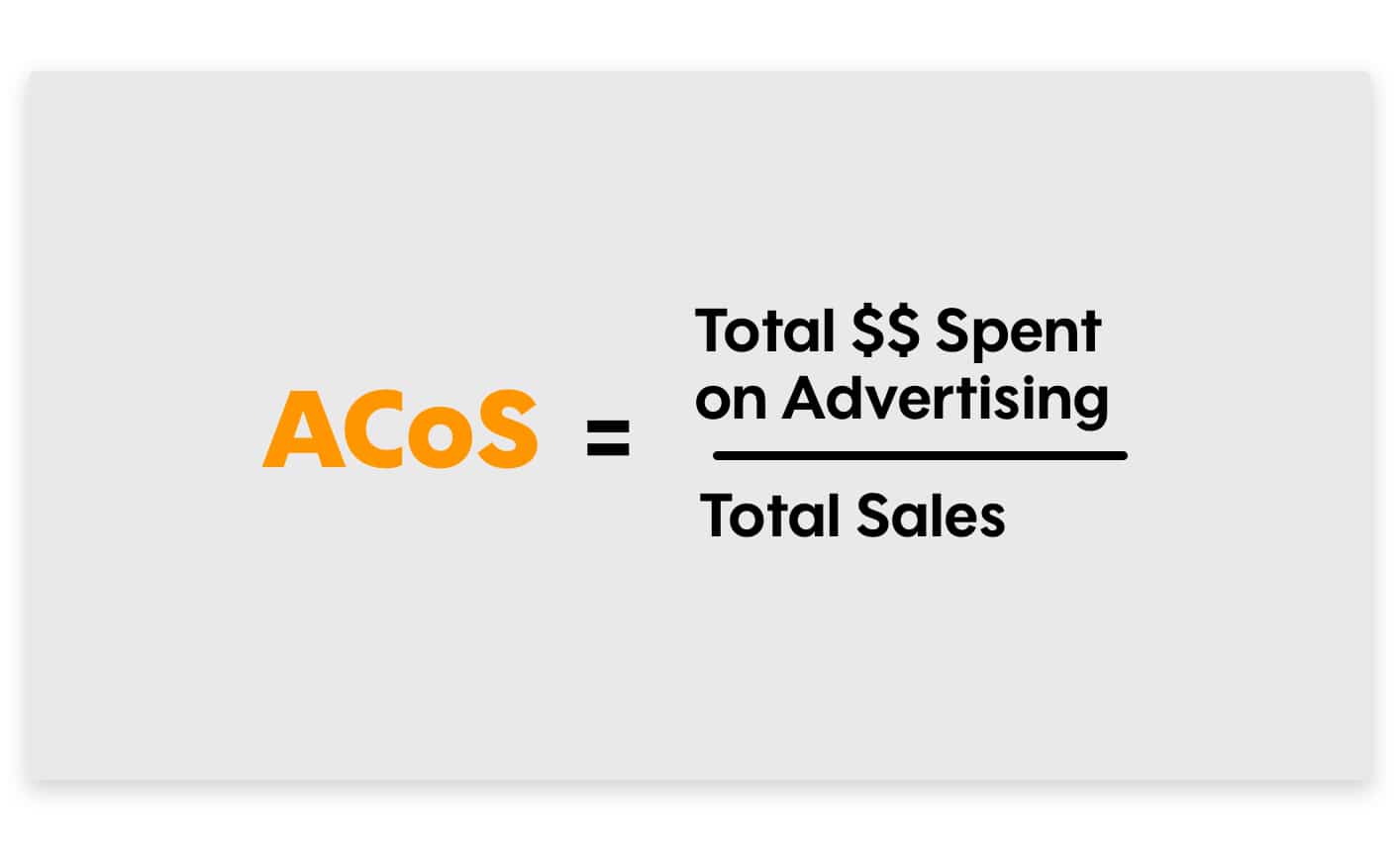 It’s a simple formula that packs a lot of value in it.
It’s a simple formula that packs a lot of value in it.
For example, if your ACoS is 25%, you spent $0.25 for each dollar you earned or $25 for every $100 you earned.
Here are a few ways you can use ACoS in your advertising strategy:
- Calculate your break-even ACoS: Break-even ACoS is the point where your advertising cost is equal to your profit margin (you have a net loss / net gain of $0). This will help you avoid the point of spending more than you are making.
- Determine your target ACoS: How much do you hope to spend per sale? Use metrics like conversion rate and average order value to do this. Tweak as you go.
- Remember that low ACoS means high profitability: Adopt this approach if you’re looking to gain as much profit as possible, sell a low-converting product, or push a product that doesn’t require high visibility. In most cases, you’ll want a low ACoS, with a few small exceptions which we’ll discuss next.
- Understand that high ACoS means high visibility: Use this to increase brand awareness, sell off old products, or gain dominance in a particular niche. You’re spending more to get your brand out there but you’re not necessarily bringing in the best value for your spend.
ACoS will be critical to the success of your overall campaign and is one of the more powerful metrics you’ll use to constantly improve your Amazon advertising campaigns.
What factors influence the cost of ads on Amazon?
There are a number of direct and indirect factors that will shape the cost of your Amazon ad campaigns. Here we tackle the most relevant cost drivers and demonstrate how they will make an impact:
Ad goals & objectives
It goes without saying that your business goals should frame your advertising campaign.
It will help you determine which products you will advertise, how your campaigns should be structured, and help you to analyze performance.
Whether you are trying to generate reviews, improve sales of low-performing products, increase your brand’s visibility, or drive sales for a new product—these goals will shape your overall approach to Amazon advertising while having less of a direct impact on how much it will cost you to advertise on the platform.
In some cases, your ad goals may drive your costs higher if you’re trying to increase visibility for products while not necessarily bringing in the most ideal profit margins. In other cases, your objectives will result in lower costs as you structure ad campaigns to maximize revenue and minimize ad spend. We’ll discuss this more below when we tackle ACoS.
Ad bidding strategy
At the most general level, cost-per-click is what you’re willing to pay when someone clicks on your ad. With Sponsored Products and Sponsored Brands, you only pay when your ad is clicked. You can choose how much to spend on each click and also choose an overall budget. Here it’s important to remember that if you’re choosing to spend on the lower end, it may harm your performance as others may be bidding higher for the same type of product.
Daily budgets can be adjusted at any time.
The actual cost can be lower than your bid depending on how the ad performs. As a general rule, you should not bid for more than you are willing to pay for a click. Using Dynamic Bids can cause this cost to exceed your bid.
With manual targeting, you set a maximum default bid which is the cost-per-click you are willing to pay when someone clicks on your ad. This kind of bid applies to all clicks unless you’ve adjusted specifically customized bids for individual keywords in a particular campaign.
With automatic targeting, your maximum bid is the cost-per-click that you are willing to pay when someone clicks an ad. The automatic part is that this applies to all clicks unless you set a customized bid for a specific targeting group. A customized bid specifies a certain spend for a targeting group whereas automatic targeting is universally applied to all groups.
Ad placement
Where and how you place your ads is yet another indirect cost factor in Amazon advertising.
You can run a placement report which shows the performance of an ad campaign (which will appear on top of search results) as compared to all other placements. The insights you get from this report regarding the performance of ads across different placement types (headline ads, product display ads, sponsored product ads, etc.) will help you to identify Sponsored Products that might benefit from adjusting bids according to their placements.
Relatedly, keyword placement and campaign placement reports help you understand keyword and campaign performance across different placement types. As such, placement alone won’t drive your costs but your placement strategy should be driven by the results you’re seeing in these reports. The reports will show you how your products are performing across specific keywords and within specified campaigns.
It’s important to note that Amazon has recently shifted to “adjust bids by placement” (formerly Bids+) in which you can set up to a 900% increase for first page as well as product detail placements.
Ad targeting
Your targeting strategy will be another indirect cost factor for your Amazon ad campaign.
With keyword targeting specifically, you’ll choose keywords to show your products in consumer searches and pay at the cost-per-click bid amount when they click on the ad. Adding more (or fewer) keywords won’t push you over whatever budget threshold or cost-per-click amount you’ve set.
The same goes for product targeting. This means that advertisers choose specific products or product categories to target for ad placements. Interest targeting is another option where advertisers can target shoppers with specific interests as well.
When you choose specific brands, categories, products, and product features that are related to your product, this doesn’t drive up the overall cost of your campaign as much as it sets its scope. You’re still bound by your specific bidding approach as mentioned above.
Ad types
In general, the types of ads you choose are indirect cost factors. Here, you’ll want to experiment with different ad types while continuing to optimize your placements and bidding strategy to get the most out of your spend.
Sponsored Products
 Sponsored Products work on a cost-per-click basis and enables businesses to promote products with ads that appear in highly-visible placements on Amazon.
Sponsored Products work on a cost-per-click basis and enables businesses to promote products with ads that appear in highly-visible placements on Amazon.
In terms of costs, the advertiser controls how much is spent on each bid as they measure the performance of their ads. For the cost of the click, customers are taken to the product page for the advertised product.
Video Ads
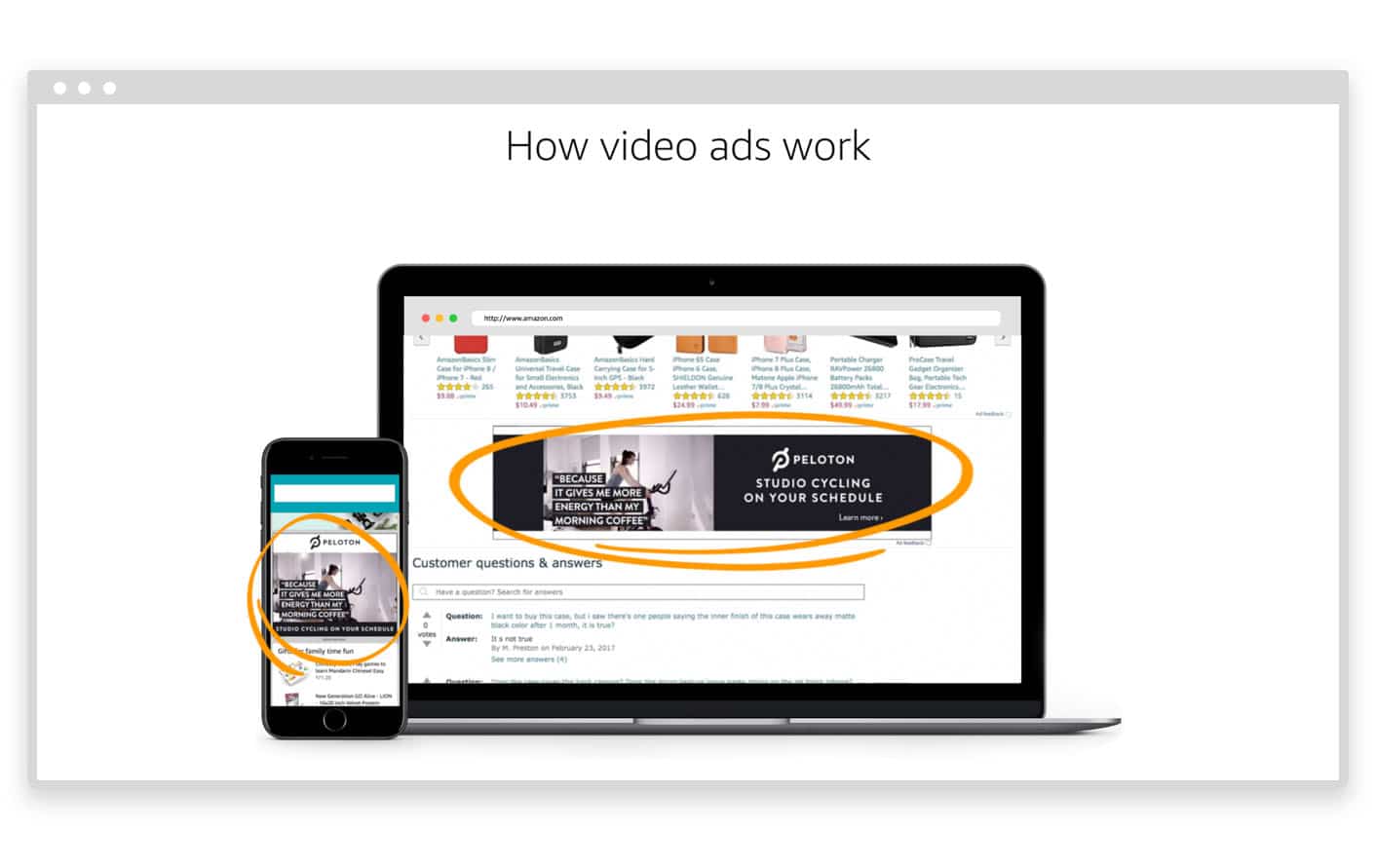
Pricing can vary significantly based on the format of the ads and their placement.
For self-service users, you can use Amazon DSP to buy and manage video campaigns. Any business can buy videos ads regardless of whether or not they sell products on Amazon.
For businesses going with the managed-service option, Amazon ad consultants will work with you and this often requires a minimum spend of $35,000.
To make video ads for your Amazon campaign, head on over to Promo.com!
Display Ads
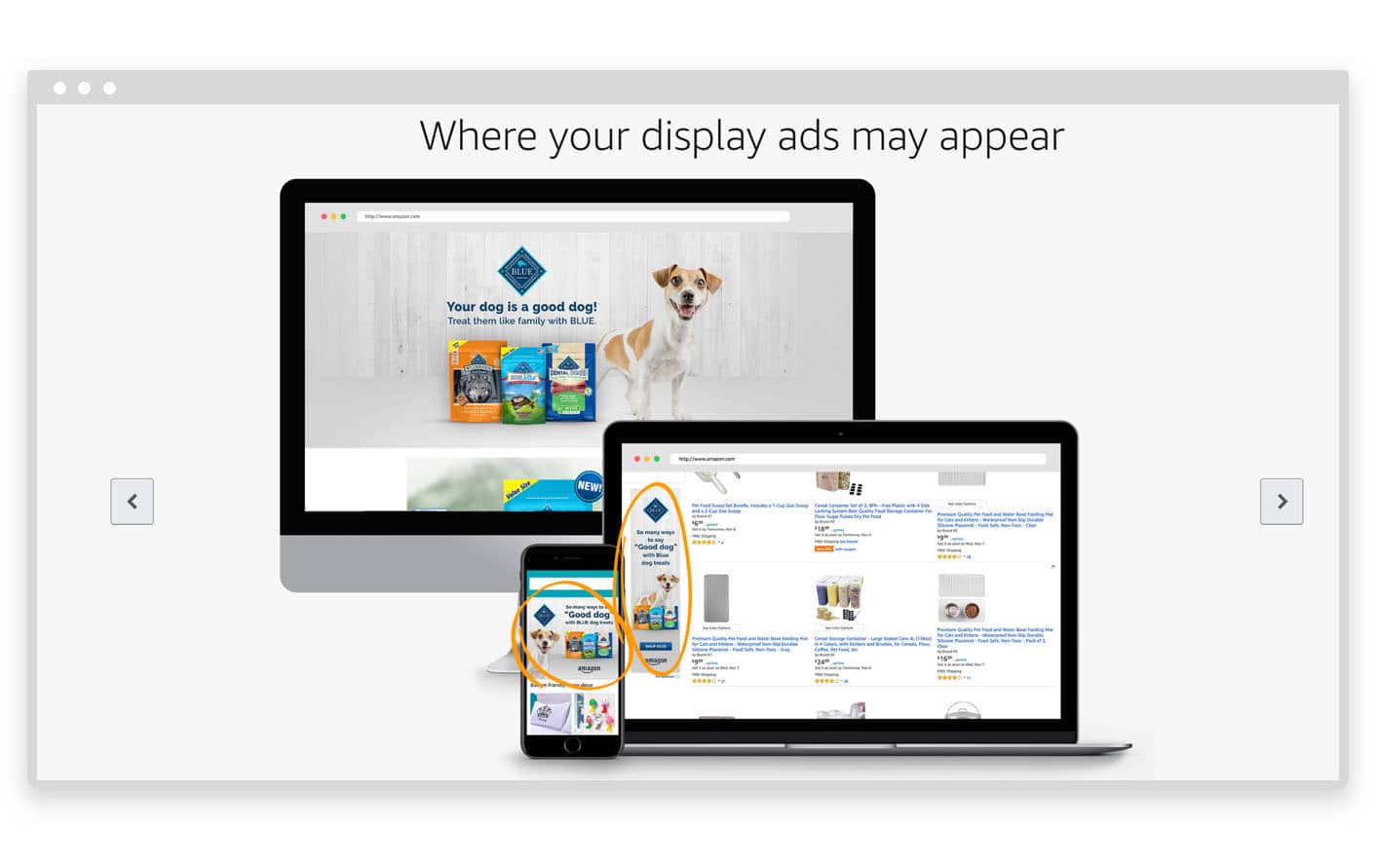 Display ads also work on a cost-per-click, auction basis. Amazon recommends that you set your bid at the maximum amount you’re willing to pay for cost-per-click in order to make your bid more competitive. This increases its chances of being displayed.
Display ads also work on a cost-per-click, auction basis. Amazon recommends that you set your bid at the maximum amount you’re willing to pay for cost-per-click in order to make your bid more competitive. This increases its chances of being displayed.
The minimum bid for a display ad is $0.02.
It’s important to note that Amazon will never charge you more per click than what you have bid. At the same time, bids are set at the campaign level so you can target multiple categories (or just one, if you wish). To create different bids across multiple categories, you will need to set up multiple campaigns.
In terms of a budget, you can set a daily or campaign budget for display ads. The minimum daily budget is $1.00 while the minimum campaign budget is $100. As always, you’ll only be charged for the actual cost of clicks received and will not be allowed to exceed your stated budget.
Search Ads
Amazon search ads also use the cost-per-click method and the minimum bid per keyword is $0.10. For headline search ads, you can only use two keyword match types: exact and phrase match. Search ads can be used to promote three or more products together.
When it comes to running a campaign, the minimum budget for these ads is $100, including a limit of $1 spent per day. You can schedule your campaigns to run as much as four months in advance.
Custom ads
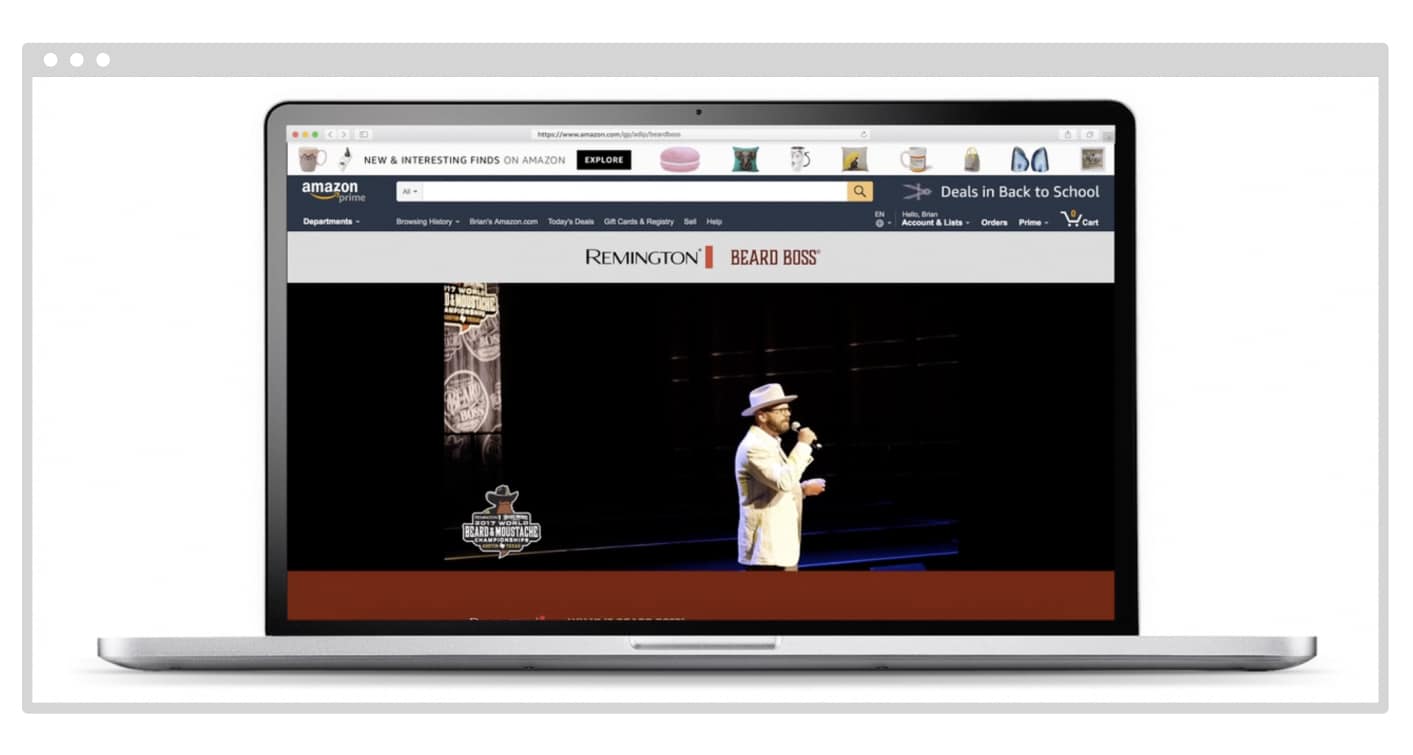
Amazon custom ads allow a business to promote their product or brand using custom executions, regardless of whether or not they sell products on the Amazon platform.
In terms of cost, you’ll need a guaranteed media spend to use custom ads with Amazon.
This means working with an ad consultant to develop a custom program for your products, which will determine the ultimate price for your custom ads. This is a highly-tailored solution for brands seeking very specialized advertising support that can manage the minimum spending requirements.
Amazon Stores
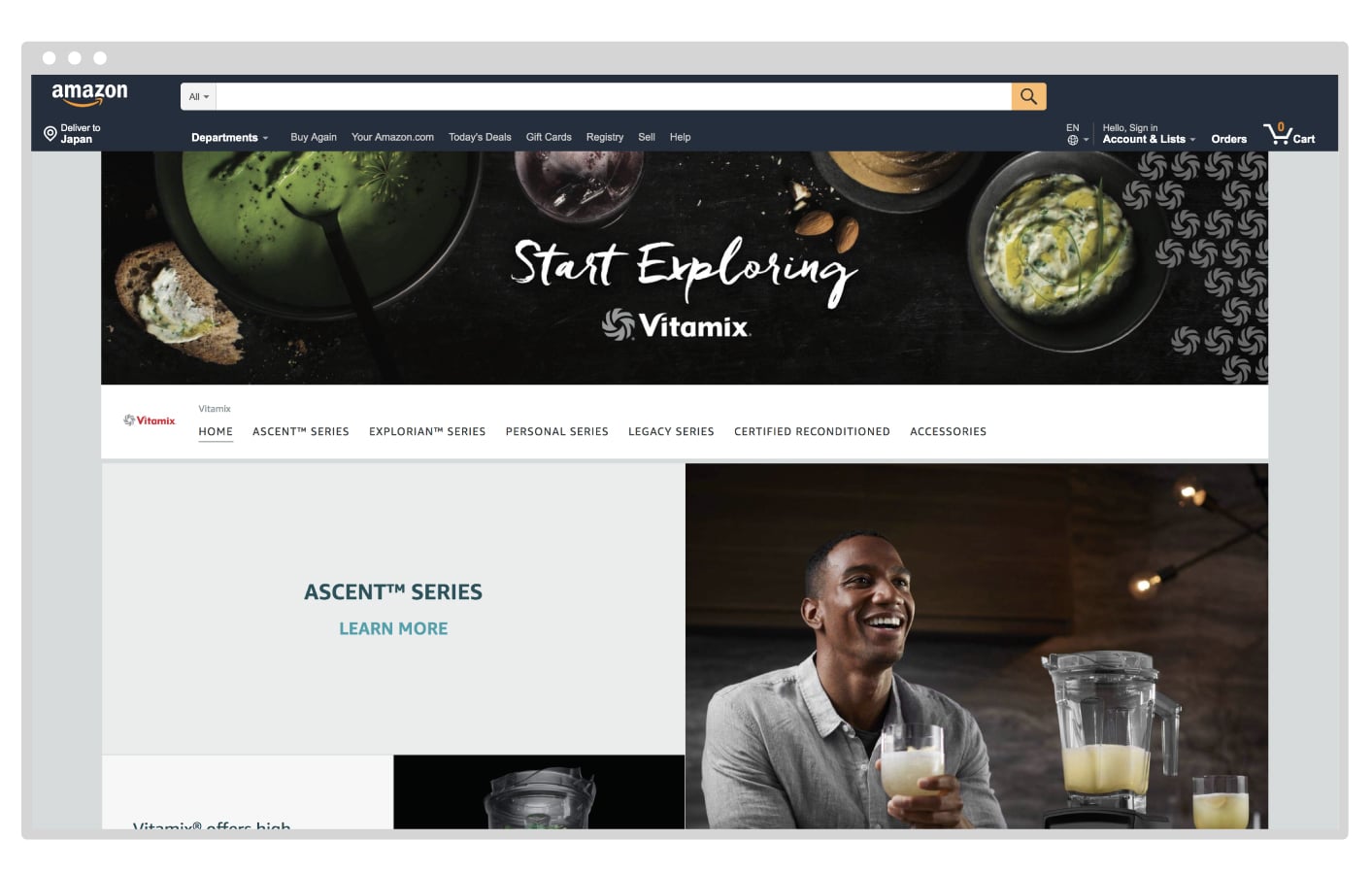 Your Amazon Store itself won’t be a cost driver for your Amazon advertising efforts.
Your Amazon Store itself won’t be a cost driver for your Amazon advertising efforts.
Creating an Amazon Store is free, and you’ll likely leverage your advertising dollars to direct customers to your Amazon Store using the various ad types discussed here. Think of your Amazon Store as a sort of landing page for your products that lives on the Amazon platform and allows customers to buy directly from you.
Amazon provides a dashboard that allows you to track the sales generated from your store and even a custom URL tag to analyze traffic sources to your Amazon Store. This is useful for determining the effectiveness of your ad spending in terms of directing traffic to your Amazon Store.
Contextual factors affecting Amazon advertising cost
Contextual factors such as competition, seasonal changes in consumer behavior, and the broader market could shape your budget, but this isn’t very different from other advertising platforms.
These should be considered indirect costs to your Amazon advertising efforts while certainly factored into how you optimize your budget, bidding strategy, and other campaign elements based on the results you are seeing.
In other words, pay attention to how customers are responding to what your competition is doing as well as seasonal spending patterns as you adjust your Amazon advertising campaigns.
Ad quality
Remember that Amazon can and will refuse ads that do not provide the highest quality customer experience.
You’ll want to put together ads with strong creative and content that is extremely relevant to the products you’re selling to not just sell the goods but also to ensure that your ads even reach the customer on Amazon’s platform.
Be sure to check Amazon’s ad acceptance policies as you are crafting your advertising campaigns to ensure you’re in compliance and producing top quality ads that make good use of your Amazon advertising budget.
Grow your profits with Amazon Advertising!
Amazon advertising offers many tools to set reasonable budgets, target specific keywords, and optimize campaigns based on real-time performance. There’s a lot you can do to turn a profit using the Amazon advertising platform if you start your ad campaign with a little know-how and clear goals for what you hope to achieve.
